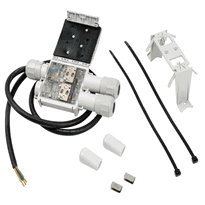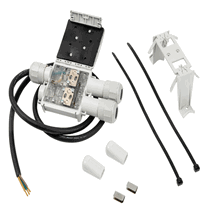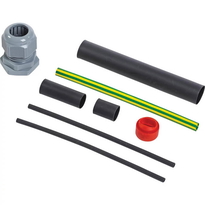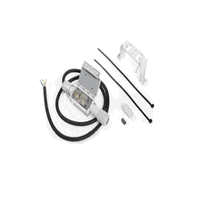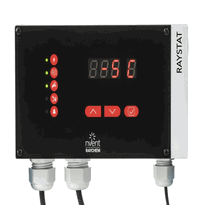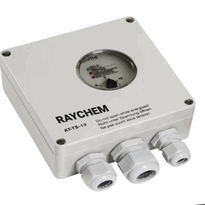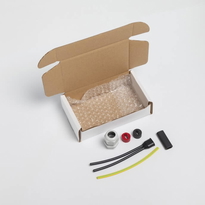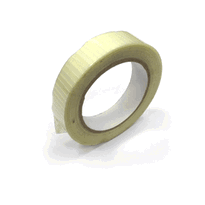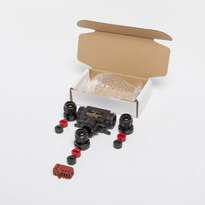Water Pipe Warming Cable
Water pipe warming cables are self-regulating electrical systems designed to prevent pipe freezing by adjusting heat output according to ambient temperatures. They are constructed from durable materials, compatible with various pipe types, and suitable for both indoor and outdoor applications. Proper installation involves accurately measuring the length of the pipe, securely securing the cable, and insulating effectively to ensure safety and efficiency. Regular inspections are essential to prevent damage and maintain optimal performance, ensuring long-term reliability. Continue exploring for detailed guidance on the most suitable application and safety practices.
Types and Technology of Water Pipe Warming Cables
Water pipe warming cables are available in various types and technological designs to effectively prevent freezing and maintain optimal pipe temperatures. Self-regulating cables are particularly popular; they adjust their heat output according to the surrounding temperature. When temperatures drop, these cables increase resistance to produce more heat, and conversely, reduce heat when conditions are warmer.
They're manufactured using a polymer matrix material that enables the current flow to modify itself, enhancing safety and energy efficiency. Such cables are ideal for a wide range of applications, including freeze protection and process temperature control for both metal and plastic pipes. They're also UL listed, ensuring compliance with safety standards suitable for residential, commercial, and industrial settings. These cables are compatible with various pipe materials like copper and steel, allowing versatile installation options.
In contrast, constant wattage cables deliver a fixed amount of heat regardless of external temperature fluctuations. They're dependable in extremely cold environments but typically require the integration of thermostats to regulate energy consumption and prevent overheating.
Both self-regulating and constant wattage cables feature durable insulation, moisture resistance, and straightforward installation, making them suitable for specific operational requirements. This versatility allows users to select the most appropriate solution for maintaining desired pipe temperatures efficiently across different applications. Self-regulating cables are widely used due to their energy-saving capabilities.
Operating Conditions and Environmental Adaptability
The effective operation of water pipe heating cables relies on their capacity to withstand a variety of environmental conditions while ensuring safety and reliable performance. These cables are specially designed to perform efficiently in both outdoor and indoor settings, providing essential freeze protection during cold weather. Key features include
1. Self-regulating cables that adapt their heat output according to the ambient temperature. This prevents overheating in plastic or dry pipes and helps conserve energy during fluctuations in temperature. Self-regulating insulation technology enables this adaptive performance by adjusting heat output as needed.
2. Robust construction using industrial-grade materials that offer resistance to mechanical impact, moisture ingress, and environmental stressors such as wind chill or persistent dampness. This ensures the cables remain durable and reliable over time. They are also resistant to UV rays and other environmental factors, making them suitable for long-term outdoor use.
3. Compatibility with a wide range of pipe materials and configurations, allowing for flexible installation on both straight and curved sections. They're designed to operate within safe temperature ranges and conform to electrical safety standards, including the provision of protections such as GFCI or GFPE.
These attributes collectively ensure consistent and dependable performance across diverse operating conditions, supporting the long-term safety, efficiency, and integrity of the installation.
Installation Techniques and Best Practices
Proper installation of water pipe heating cables requires meticulous planning and adherence to specific techniques to guarantee safety, efficiency, and durability.
Begin by accurately measuring the length of the pipe, adding at least 30 centimeters as a buffer zone. Clear the pipes thoroughly, removing dust, grease, and dirt using mild soap and warm water. Then, ensure they're completely dry before proceeding.
Select the appropriate cable type based on the pipe material, diameter, and environmental conditions. It's advisable to plan the routing along the coldest side of the pipe to provide effective freeze protection. Self-regulating heating cables are safe and reliable for outdoor applications, even in extreme cold conditions down to -40°F (-40°C). For pipes less than 8 centimeters in diameter, install the cable straight along the underside, fixing it at intervals of every 30 centimeters with fiberglass tape. For larger pipes, wrap the cable spirally, maintaining even contact and consistent spacing between loops to ensure uniform heat distribution. Ensuring proper manufacturing standards and certification of the heating cables is crucial to meet safety and performance expectations.
Secure the cable firmly with aluminium tape, insulate appropriately, and make certain that all electrical connections are adequately protected from moisture and environmental exposure.
Following these guidelines will help achieve a safe and long-lasting installation.
Ensuring Safety and Maximizing Performance
Regular inspection and maintenance of heating cables are vital for safety and optimal performance. They help identify potential hazards such as cracked insulation, charred materials, or exposed wires, which could lead to electrical fires or system failures. Electrical circuit requirements for self-regulating heating cables Stress on the cables from improper connections can compromise their integrity over time, making inspections even more critical. Incorporating proper installation techniques can substantially extend the lifespan of the cables and improve their efficiency.
To maintain safety and efficiency:
1. Inspect the entire length of the cable annually before the winter season, replacing any damaged sections promptly.
2. Always unplug the cable before inspection to prevent electric shocks or damage.
3. Follow the manufacturer’s guidelines carefully, avoiding overlapping, improper insulation covers, or the use of extension cords that aren't rated for permanent connections.
Additionally, ensure that cables are connected directly to dedicated outlets, and replace any used or damaged cables immediately.
Proper installation, routine inspections, and strict adherence to safety standards are essential for maximizing performance and minimizing fire risks.
Conclusion
In summary, selecting and properly installing water pipe warming cables requires an understanding of the different types and technologies available, as well as assessing the operating conditions to ensure environmental compatibility. Applying correct installation techniques and following safety guidelines are essential for optimal performance. Careful planning, regular inspection, and adherence to manufacturer instructions will help users effectively prevent pipe freezing, enhance energy efficiency, and maintain system reliability. Water pipe warming cables thus represent a practical solution for managing cold weather conditions in both residential and commercial settings across the UK.









